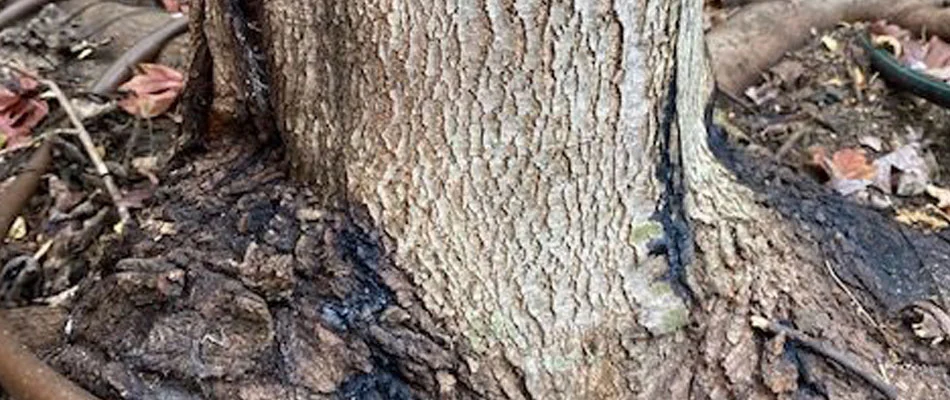That “black stuff” is the result of a bacterial infection called Wetwood or Slime Flux. These particular bacteria thrive in anaerobic (low oxygen) conditions present in the dense interior hardwood. As the anaerobic bacteria ferment and release carbon dioxide, it creates pressure forcing liquid from woods in the trunk. The fluid then becomes black or brown once exposed to air. You can often smell the fermentation process near a tree with wetwood. The fluid also attracts insects such as bees, wasps, ants, and beetles.
Death by wetwood is a slow process and can take years. Usually, a tree’s death from wetwood is an accumulation of compounding issues; for example, saturated bark decays, opening up the tree to further damage. The leaking fluid is a food source causing Insects, fungi, and other bacteria to further infest trees wetwood. An infected tree might also show scorched, yellowing, and curling foliage before premature leaf drop in late summer.
Unfortunately, there is no cure for wetwood. The old drilling method into the damaged area to relieve pressure and drain the fluid is rarely beneficial and often leads to more harm than good. Another method is treating the wood topically with a disinfectant such as a diluted bleach mixture (1:9 bleach to water ratio). It should be noted that any intervention is a bandaid and not a cure. The tree will eventually die from the infection.
Our sources include the Division of Agriculture Research and Extension University of Arkansas, Garden Guides, Mark Russell with 770 Arborist, The Morton Arboretum, and Missouri Botanical Garden.



Comments (0)
Thanks for your comment!
Thanks for your feedback! Your comments have been successfully submitted! Please note, all comments require admin approval prior to display.
Error submitting comment!
There is a problem with your comment, please see below and try again.